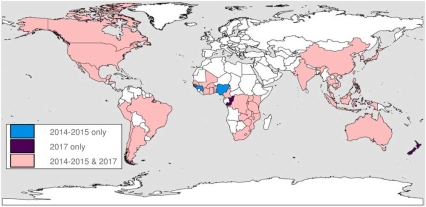Substance use is common among people living with HIV and is associated with less successful HIV treatment outcomes. Integrating substance use services into HIV care is a promising strategy to improve patient outcomes and reduce HIV incidence. To determine the availability of substance use-related education, screening, and referrals in HIV treatment centers across the globe, investigators examined two surveys of HIV care and treatment sites participating in the International epidemiology Databases to Evaluate AIDS (IeDEA) Consortium. The scientists compared changes in availability of these substance use services over time for 147 sites treating HIV patients.
In 2014–2015, most treatment centers (75%) reported providing substance use-related education on-site; about half reported on-site substance use screening; and about half reported referrals to substance use treatment. By 2017, the proportion of sites providing these services increased by 9%, 16%, and 8%, respectively.
However, these on-site services were most commonly reported at centers serving only adults, as opposed to treatment facilities for children and adolescents. The investigators not only found reduced availability of these services for younger patients, but also for adults in underserved geographic settings. The analysis further showed that gaps persist particularly in relation to screening and referral practices.
A total of 286 sites in 45 countries participated in the 2014–2015 survey and 237 sites in 44 countries participated in the 2017 survey. The participating sites are primarily public-sector health facilities and include both academic and community-based hospitals and health facilities. The IeDEA Consortium is supported by multiple institutes, centers and initiatives at the National Institutes of Health, including NIDA.
Study:
- Angela M. Parcesepe, Kathryn Lancaster, E. Jennifer Edelman, Raquel DeBoni, Jeremy Ross, Lukoye Atwoli, Mpho Tlali, Keri Althoff, Judicaël Tine, Stephany N. Duda, C. William Wester, Denis Nash for the IeDEA Consortium. Substance use service availability in HIV treatment programs: Data from the global IeDEA consortium, 2014-2015 and 2017. PLOS ONE.

